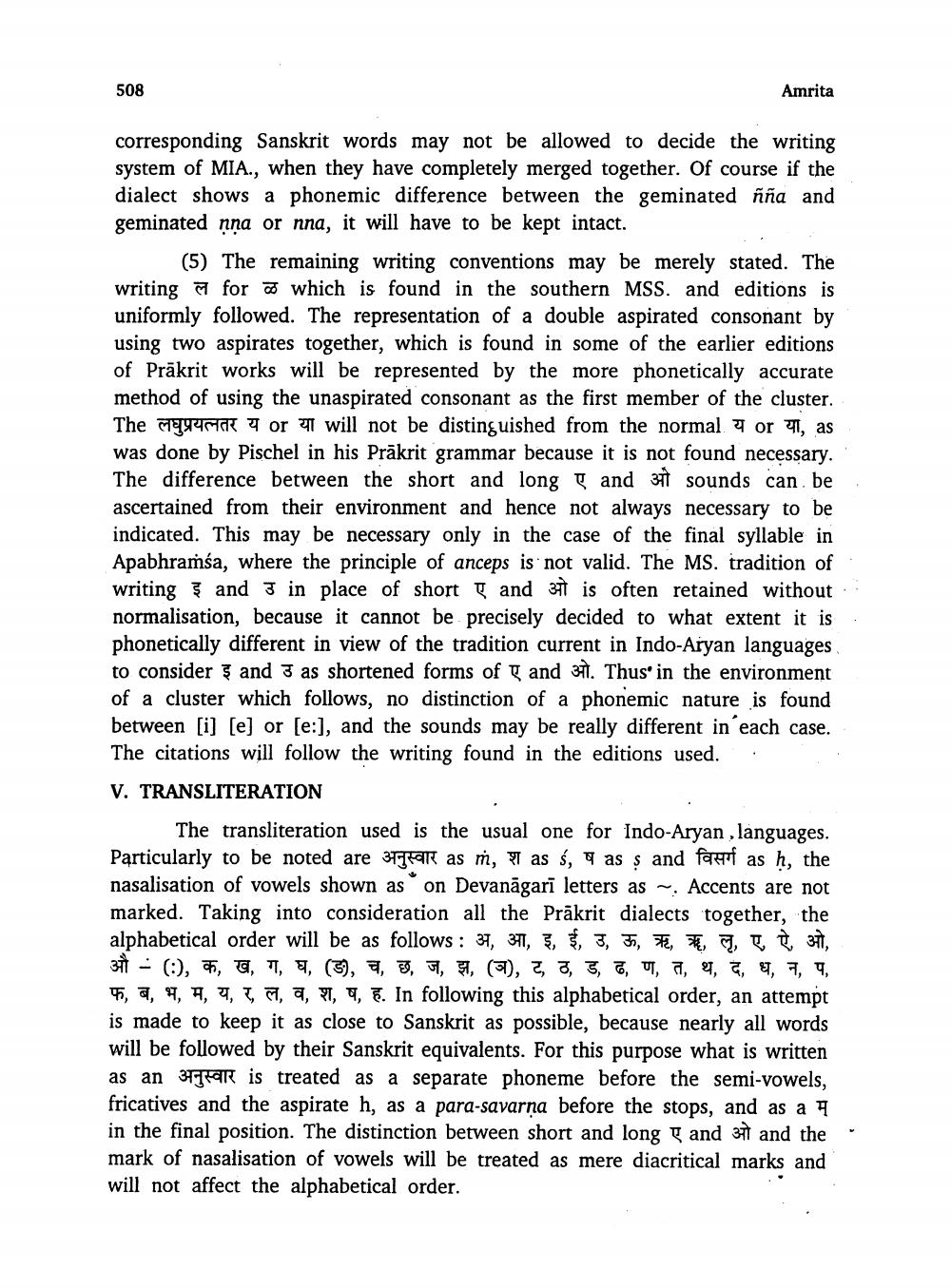________________
508
Amrita
corresponding Sanskrit words may not be allowed to decide the writing system of MIA., when they have completely merged together. Of course if the dialect shows a phonemic difference between the geminated ñña and geminated nna or nna, it will have to be kept intact.
(5) The remaining writing conventions may be merely stated. The writing for which is found in the southern MSS. and editions is uniformly followed. The representation of a double aspirated consonant by using two aspirates together, which is found in some of the earlier editions of Präkrit works will be represented by the more phonetically accurate method of using the unaspirated consonant as the first member of the cluster. The लघुप्रयत्नतर य or या will not be distinguished from the normal य or या, as was done by Pischel in his Prākrit grammar because it is not found necessary. The difference between the short and long 5 and 311 sounds can be ascertained from their environment and hence not always necessary to be indicated. This may be necessary only in the case of the final syllable in Apabhramśa, where the principle of anceps is not valid. The MS. tradition of writing and 3 in place of short T and 311 is often retained without normalisation, because it cannot be precisely decided to what extent it is phonetically different in view of the tradition current in Indo-Aryan languages to consider 5 and 3 as shortened forms of T and 371. Thus in the environment of a cluster which follows, no distinction of a phonemic nature is found between [i] [e] or [e:], and the sounds may be really different in each case. The citations will follow the writing found in the editions used. .
V. TRANSLITERATION
The transliteration used is the usual one for Indo-Aryan , languages. Particularly to be noted are 3 car as , as ś, 7 as ș and fast as ḥ, the nasalisation of vowels shown as on Devanāgarī letters as ~, Accents are not marked. Taking into consideration all the Prākrit dialects together, the alphabetical order will be as follows : 37, 371, 3, 8, 3, 3, #, # ], TT371, 311 - :), a, a, 7, 9, (G), , 39, 37, F1, (37), 2, 3, 3, Z, UI, 7, 4, 2, 87, 7, 9, 9, 7, 97, 9, 7, , 3, 7, 1, 4, . In following this alphabetical order, an attempt is made to keep it as close to Sanskrit as possible, because nearly all words will be followed by their Sanskrit equivalents. For this purpose what is written as an 34aR is treated as a separate phoneme before the semi-vowels, fricatives and the aspirate h, as a para-savarna before the stops, and as a 4 in the final position. The distinction between short and long and 377 and the mark of nasalisation of vowels will be treated as mere diacritical marks and will not affect the alphabetical order.




